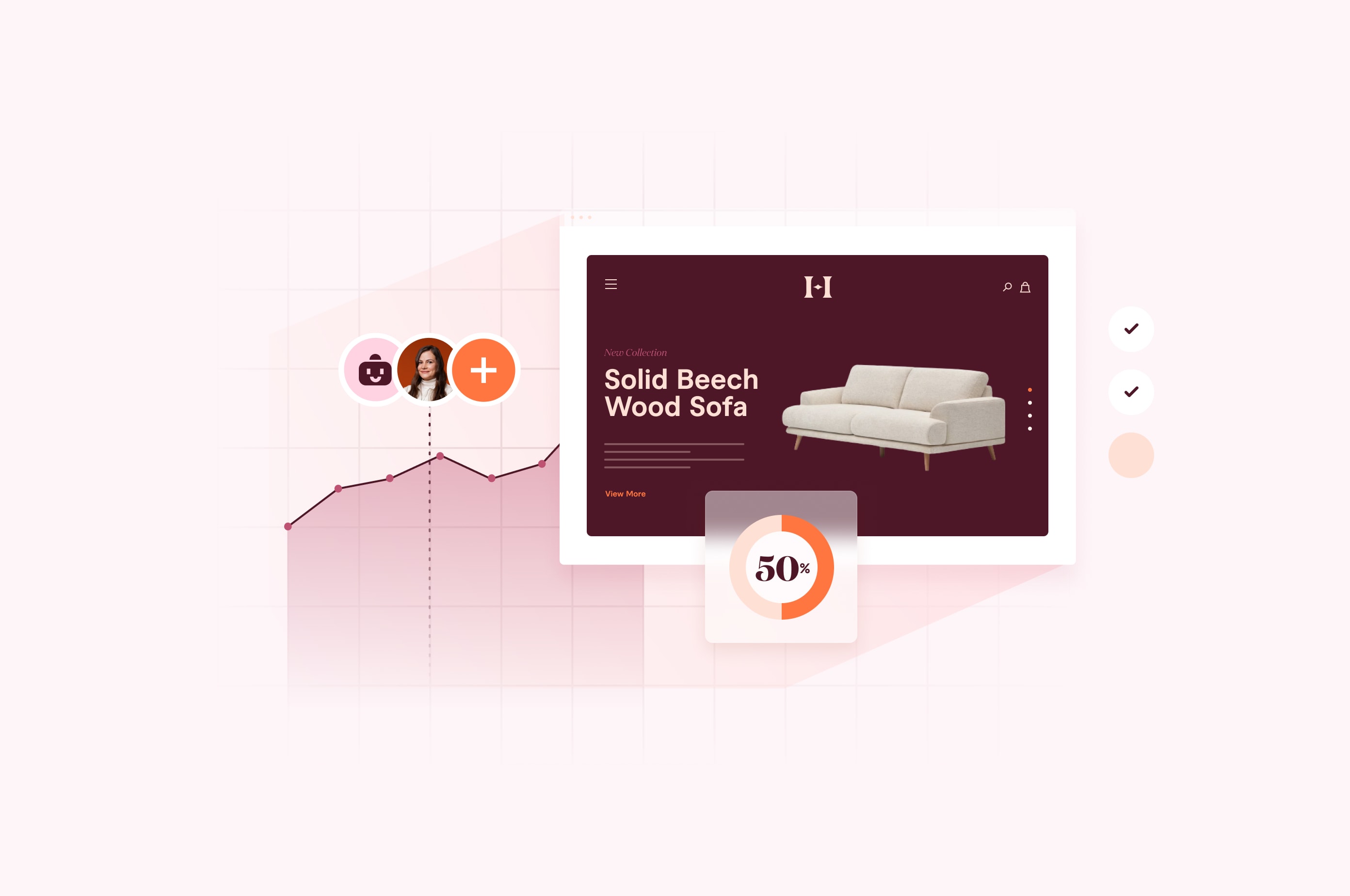What is the Gig Economy and How to Leverage Freelance Talent
The gig economy is reshaping how we work. Here's what it means for your business.
 February 2, 2025
February 2, 2025 6 minute reading
6 minute reading
The gig economy is transforming how we work. People are looking for more autonomy, control, and flexibility—choosing a work-life balance that prioritizes working to live instead of living to work. In fact, Deloitte reports that 55% of workers already have or are likely to switch from full-time employment to freelance projects.
For businesses, independent contractors are a good solution for gaining specialized talent without the overhead of traditional hiring.
In this article, we’ll explore everything you need to know about the gig economy, and whether it’s the right fit for you as an employer and/or as a freelancer.
What is the gig economy?
The gig economy is where you can pick up jobs—or “gigs”—whenever you want, instead of being hamstrung to a time clock or a single employer. This provides freedom and empowerment for you to be your own boss, but also means you don’t get the security that often comes from working that typical nine-to-five for a company.
People first started using the word “gig” back in the 1920s. It was used by musicians working the jazz scene to describe playing one-off performances. This evolved through the 20th century to other sorts of work like freelance writing and consulting. Around 2010, online platforms like Uber and Fiverr were created to make it easier to connect freelancers and employers.
Today, the gig economy has a $556.7 billion market value globally and is expected to reach $1.85 trillion by 2032. In the U.S. alone, Statista projects that there will be more than 86.5 million people freelancing (50.9% of the total U.S. workforce) by 2027.
Pros and cons of the gig economy
The gig economy can offer freedom and financial benefits to both employers and employees. But, there are also possible drawbacks to this type of work model for both parties.
Employers
Before hiring freelancers, start with an honest assessment of your business and its needs. Figure out the project scope or task you want a possible freelancer to complete. For example, are you looking at a one-time help with graphic design or ongoing music and audio production?
Next, look at your budget. While freelancers might charge more per hour than employees, you'll skip traditional costs like healthcare and office space. But also keep in mind cost isn’t the only thing you should be looking at. Just choosing the cheapest option could lead to headaches later on.
Now, it’s time to be honest about your management style and the systems you have in place that run your business. With freelancers, you need to offer crystal-clear project briefs, solid communication channels, and be available to put in extra time to answer questions and oversee their remote work. Also, if they’ll be handling sensitive material, do you have processes in place to ensure sensitive company data doesn’t get leaked?
Pros of working with freelancers
Global talent: Tap into a worldwide talent pool of specialists who can jump in exactly when you need them without the long-term commitment.
Cost efficiency: Keep your budget lean by paying only for the work you need, avoiding the overhead of full-time salaries and benefits.
Scalability: Adapt your team size instantly as projects grow or shrink, maintaining perfect alignment with your business needs.
Expertise on-demand: Bring in expert knowledge when needed to improve project quality and performance.
Cons of working with freelancers
Quality variability: Work hard to maintain consistent quality as different freelancers bring their own styles and standards to each project.
Time investment: Pour time into finding and testing new freelancers until you build a reliable network you can trust.
Remote collaboration: Master the art of working from home and remote collaboration across time zones and cultures to keep projects moving smoothly.
Freelancer turnover: Accept that your best freelancers might disappear for better opportunities, taking their expertise with them.
Freelancers
The best thing about being a freelancer is the freedom it brings. But with the freedom brings a lack of security. So, before you quit your nine-to-five and jump into freelancing, here are some things to consider.
When you’re starting out, you might not be able to get consistent work, so build up some savings you can fall back on or have a side gig to cover expenses. And remember, you are your own boss, so you are paying for healthcare, keeping track of your taxes, and are in charge of your own retirement benefits.
Next, think about your workspace setup. If you’re a freelance furniture maker but don’t have anywhere to paint or cut wood, that won’t work. And if you’re a video animation freelancer but don’t have a reliable computer or internet connection, how’re you going to get any work done? Make sure you have the necessary tools, expertise, and space to set yourself up for success as a freelancer.
Being your own boss also means you’re responsible for everything. Not just the work your client pays you to do but also finding clients, marketing yourself, handling contracts and paperwork, and managing client feedback. You’ll be wearing multiple hats (if not all of them), so make sure you have the time and energy to take on all this responsibility.
Along with that, you need to know how to motivate yourself and maintain professional standards. Remember, you’re your own boss, so no one else is going to crack the whip. Taking it one step further—can you set boundaries between work and personal life and maintain a healthy work-life balance?
Pros of being a freelancer
Flexibility: Shape each workday around your life by choosing when and where you work, whether tackling projects at midnight or switching locations every month.
Income potential: Watch your income grow beyond traditional salary caps as you build your reputation and raise your rates—no more waiting for yearly reviews.
Custom schedule: Create your own ideal schedule that matches your natural rhythm and energy levels, taking breaks when you need them most.
Global networking: Build connections with amazing clients worldwide, turning your portfolio into a showcase of diverse, exciting projects.
Cons of being a freelancer
Income instability: Ride the income roller coaster as money flows differently each month, making it tricky to plan for big purchases or investments.
Self-employment tasks: Navigate the maze of self-employment responsibilities like taxes, health insurance, and retirement planning—tasks your employer used to handle.
Non-billable hours: Spend precious hours on behind-the-scenes work like pitching to clients and chasing payments, cutting into your billable time.
Lack of benefits: Deal with zero safety nets—no guaranteed paycheck, paid time off, or sick days to fall back on when life throws curveballs.
Popular jobs in the gig economy
The gig economy is growing. According to the MBO Partners State of Independence 2024 report, the number of full-time independent freelancers in the U.S. rose from 13.6 million in 2020 to 27.7 million in 2024.
But some fields are in higher demand than others. The most popular jobs in the gig economy combine creativity with technical know-how. Here’s a list of the top five in-demand freelance gigs to help you get business ideas for new income streams:
Content creators: Businesses constantly need engaging content. Content creators have to understand how different platform algorithms work, how to analyze metrics, and come up with creative and engaging campaigns.
UX strategists: The look and usability of a website is the perfect marriage between creativity and technical know-how. UX strategy professionals have to juggle eye-catching designs with making a site or product make sense to users.
AI engineers: Artificial intelligence is already transforming industries, so many industries need engineers who can develop and train AI systems.
Brand consultants: If you want to get seen, you need to stand out amongst all your competition. Brand consultants help businesses build strong identities and stand out.
Market researcher: A market research expert investigates consumer behavior, market trends, and the competition. They gather and analyze information to help businesses make strategic decisions about products, services, and marketing strategies.
How much do independent workers earn?
According to Fiverr's 2024 Freelance Economic Impact Report, the average U.S. freelancer salary reaches $99,000 annually. Of course, earnings vary widely based on profession, experience level, and whether a freelancer is participating in gig work full-time or not. Statista reports 55% of gig workers report making $50K annually (most only using gig work as a side hustle), while on the high end, the number of freelancers earning $100K has steadily increased since 2011.
Looking at hourly rates, high-paying freelance roles include public relations managers ($50-100/hour), business consultants ($28-98/hour), and media buyers ($50-200/hour). Creative professionals like writers average $23/hour, while technical roles like software developers can earn $10-100/hour depending on expertise.
The key factors that can affect freelance rates include:
Years of experience and skill specialization
Education and professional certifications
Portfolio strength and client reviews
Client location and market demands
How the gig economy is shaping modern work
Maintaining a healthy work-life balance and having more autonomy have become more important in modern work culture—it’s no wonder working as a freelancer has become more popular. According to Fiverr's 2024 Freelance Economic Impact Report, 71% of freelancers now focus exclusively on independent work—up from 64% in 2022.
For employers, tapping into the freelance market has been a great way to reduce overhead costs, tap into a global talent pool, and find people with specialized skill sets. This works incredibly well for industries that require agility, innovation, and scalability.
With digital platforms like Fiverr, freelancers can showcase their skills to a global audience while businesses gain access to specialized talent on demand. This accessibility has helped grow the independent workforce, representing 4.1% of the U.S. labor force.
Being able to set their own rates, take on multiple clients, and generally have more control over their earning potential has helped independent contractors to thrive. Independent professionals in top U.S. markets earn an average of $48,288 annually. But, many are reporting revenue growth, with 43% increasing their revenues in 2023 and 55% expecting further growth in 2024.
Hire freelancers on Fiverr today
Running a business is about adapting quickly to market needs and finding the right talent to help you get there. When you hire a freelancer, you're bringing in specialists who are experts in their field and are ready to dive into your project right away. Need a killer website? Someone to help you sell products online? A content writer who knows your industry inside out? Or maybe an AI expert to streamline your operations?
Fiverr has talented freelancers from over thirteen fields and offers services in more than seven hundred categories, so you can find exactly what you need.
Gig economy FAQs
What does gig economy mean?
The gig economy is a labor market focused on short-term, flexible jobs. Digital platforms like Uber, DoorDash, and Upwork are often used by both freelancers and employers to connect to one another. This type of work allows freelancers flexibility in when, where, and how they work but typically lacks security and benefits like company-sponsored retirement plans and paid leave.
Is Uber a gig economy?
Yes, Uber is an excellent example of the gig economy. It connects independent drivers with passengers through its app, allowing drivers to work flexibly by choosing when, where, and how much they drive. Drivers are paid per ride and classified as independent contractors.
What is the downside of the gig economy?
The gig economy offers flexibility, but it comes with several downsides:
Income instability: Gig workers often face unpredictable earnings due to variable demand, seasonal fluctuations, and lack of guaranteed hours.
Lack of benefits: Independent contractors are not entitled to employer-provided benefits like health insurance, retirement plans, paid leave, or unemployment benefits.
Job insecurity: Gig work is often temporary, leaving workers without long-term stability or career growth opportunities.
High expenses: Workers typically bear the costs of tools, equipment, or vehicles needed for their jobs, as well as taxes and insurance.
Worker exploitation: Some platforms set low pay rates or charge high commissions, reducing net income.
Classification issues: Being labeled as contractors often limits worker protections and rights.






